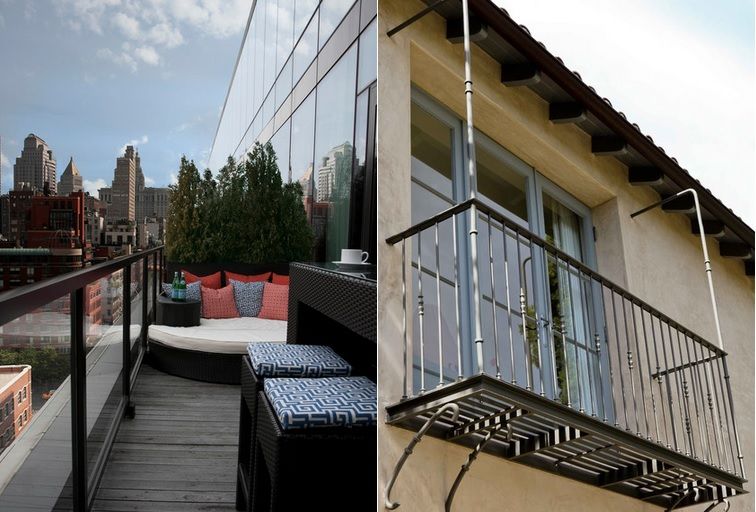Australians are a lucky bunch!! We are so blessed that every nation on the planet earth are jealous of us and wish they have the life we have. From our beautiful weather and our outdoor living way of life, what an awesome place to live in Australia.
This beautiful land that has provided us with an awesome way of life also gave us the choice on how to have our home designed. Home owners sometimes opt in for iconic designs such as verandahs, patio etc., and sometimes find it challenging to differentiate between some of this structures.
Sometimes it is challenging to tell the difference between verandah and balcony as the designs for both can be very confusing. In this article, we have set out to help our readers to understand the difference between these two magnificent structures.
Balcony
A balcony can be defined as a structural platform that is built outside of a building, enclosed by walls or balustrades. This magnificent structure is generally built with supported columns or console brackets to give it a firm look. Balconies are designed and installed to project form the wall of a building, usually above the ground floor.
Balconies are different from verandah when it comes to the way they are being used and occupied. Most home owners would use their balconies for a party or celebration while verandahs are generally used for such occasions.
Balconies comes in handy on those lovely evenings when you have just you, your book and a bottle of champaign to keep you relaxed and focused. Or you could enjoy a balcony with a good mate with a bottle of scotch and good memories to reminisce.
Verandah
There has been lots of debates as to where the word Verandah originated from. Most people don’t know it actually comes from India via the Middle East and the meaning is quite interesting as its resonate with the Australian families more than any country in the world. The word Verandah simply means; a place that leads outdoors.
As Australia love their out doors and as such almost every homes in Australia is built with a verandah. Verandahs are unlike patio, this type of home extensions are usually more spacious for a built in table and few chairs around. Having said that, i would like to add that this notion is subjective and your verandah can be as spacious as you want it to be.
Verandah came into vogue early in Australia’s history and as since been an important part of our home. The good news is; they never gone out of style hundreds of years later. Hundreds of thousands of contemporary homes installed their verandahs right in front of the house for relaxations and family get togethers. This style of design would usually complement with patios in the backyard for privacy and entertainment.
Verandahs and Australians
Verandahs are generally well known in Australia and are fondly used. Mostly during the summer and spring when it’s not too cold to have a good BBQ outdoor. Verandah is your best bet when you have those family get together parties and the kids couldn’t let the couches rest.
Verandahs can either be built in with the roof of the house or can be built with its own separate roof. They are sorts of roofed platforms around the house.
In fact, they play the role of a ground floor balcony, surrounding the house and giving access both to the entrance and the back door of the house. Even though verandahs are generally designed to be opened on all sides, they can however, be built with a railing fence to provide some sort of shade.
Verandahs with Styles
Overall, there are four basic styles of verandah on the market: curved, flat, gabled and ‘bullnosed’, which is often simply referred to as covered. Even though we categorize those styles as standards, home owners have the options to customize their project to taste before finalizing the installation.
Homeowners can choose from the type of construction used to craft the verandah, such as wood or steel, to the colours of the paint for the frame and accents.
Choosing the curved
Home owners are generally presented with ranges of design based on their landscape and size of the land.
A curved verandah is one of the more stylish options to choose from, as it has slopes downwards and can easily connect to virtually anything. As a curved style lends well to creating specific looks, it can also be combined with other roofing styles to create a very unique look for a home. This is a great option for those that are bored with the typical ‘flat’ or angular look of a roof or existing verandah.
Going flat
Most home owners who are installing their verandahs after home completion would sometimes opt informal a flat style verandah. This decision by SA home owners makes the flat verandahs the most common style found in Australia. The reason for this decision is simple and that is because a flat verandah is relatively easy to install into an existing home.
A flat style is great for those that merely want a simple verandah that they can relax under, without the worries that come along with more trendy or risky designs. It can also be used as a freestanding structure for anyone that may want to keep it separate from their house, although this isn’t typically the case. A flat verandah tends to be the least expensive of the styles available on the market, which can be useful for those on a budget.
Rite Price Roofing is part of the iconic Rite Price Group of companies that has been servicing South Australia for decades with excellent customer services. Rite Price Group consist of a heating and cooling company which is the mother company, giving South Australians the best air conditioning systems available in market.
Rite Price also ventures in home security, with strong believe in keeping the Australian home owners protected from any intruders, Rite Price Security has successfully implemented security cameras that protects home owners and their belongings for decades.
Rite Price Roofing is the part of Rite Price Group that provide the best roofing to all South Australians. With elegant designs and unbeatable prices, we come with the best roofing materials.


